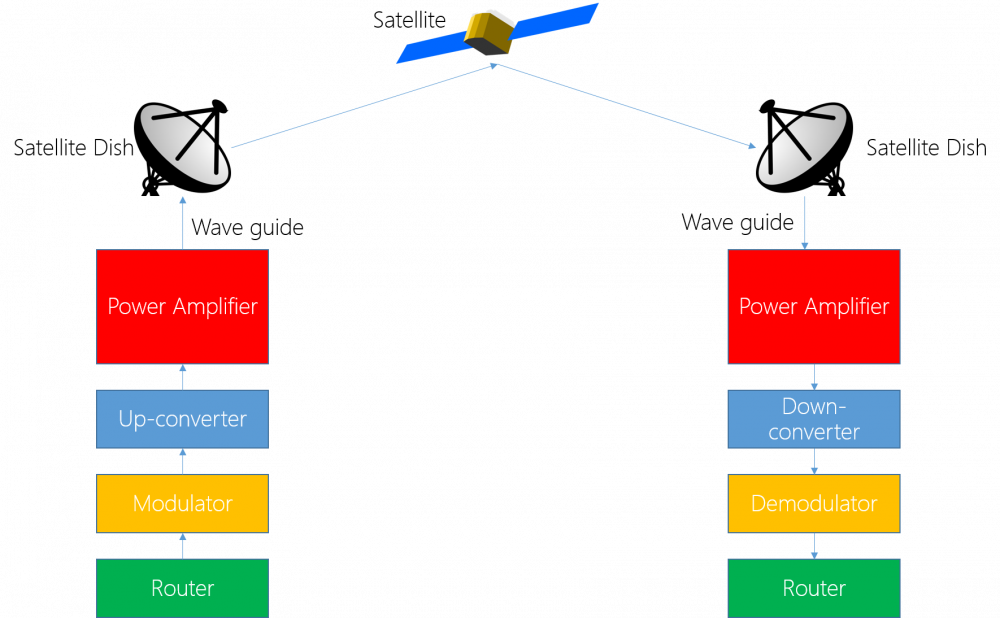General Flow of Data
A satellite has its heart at the communication subsystem as without the data being relayed to relevant places like ground stations, consumer items (mobile phones), weather stations, it would just be a rock you wasted millions or billions of dollars on. In fact the first satellite launched Sputnik 1, had its aim to verify whether you can send a signal from space and receive it on Earth, the proof of concept of modern way of life.
Before realising how this link between space and ground is achieved and the work that goes into it, let’s look at another perspective: data handling.
Let’s take an everyday example. You click a photo in your camera and it is stored in a particular format of data let’s say jpeg. The least amount of data stored is the (number of pixels)x4. This includes a byte for the location and 3 for red, green, blue. Even while storing this colossal data it is easily reproduced on any electronic device with the same clarity. The analogy to a satellite is that every bit of the data, or every voice variation on cellphone calls sent from satellite to ground or from ground to satellite on proper processing should give the message that was intended to be delivered. This task may sound trivial but has its own complexities that would be elaborated on later.
As an overview for a satellite that deals in binary data transmission, data handling can be divided into the following stages:
- Storage and retrieval of data
- Packeting i.e. structuring the transmitted data so as to identify the relevance of each bit
- Transmission after the required modulation
- Reception at the relevant place and subsequent decoding
As the signal generated on satellite passes through long distances, it picks up some disturbance and is attenuated. After reception on antenna, it is decoded, post which, it is processed to check whether the received data is accurate. Take for example, GPS. The location on your electronic device does not show the moment you start the app. Its because the GPS processor for about a minute checks the consistency i.e. let’s say it gathers location data twenty times in a minute, it checks the accuracy of signal received by the repetition in data and gps mechanism's inbuilt quality checks. The mechanism is complex but the underlying fact is that every data received from a satellite must be double-checked before claiming it to be accurate and usable.
The above image shows a typical internet link, between ground and satellite. This can however be generalised to any satellite. The various analogies:
- Pre-router: Stored data to be sent
- Router, modulator and upconverter: Transceiver unit
- Power amplifier: Power amplifier for transmission and low noise amplifier for reception
- Waveguide: Cables, Transmission lines
- Satellite dish: Antenna used
The satellite onboard would also house components with similar functionality. Thus on understanding either one of the links, all wireless links involved in the satellite can be well understood.
If you are done reading this page, you can go back to Communications Subsystem.
